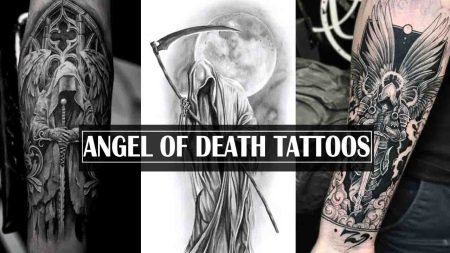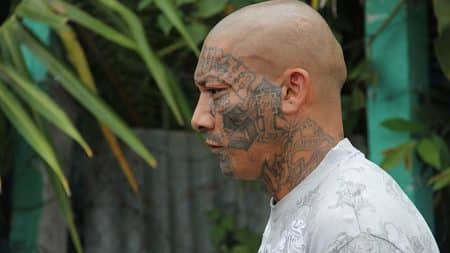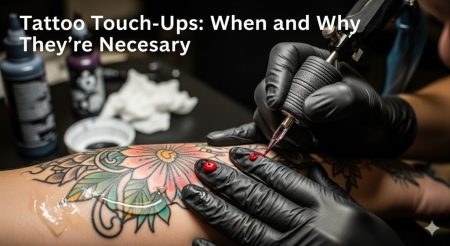| Aspect | Details |
|---|---|
| Keyword | Arabic Tattoos |
| Main Entities | Arabic Tattoo Meaning, Arabic Tattoo Script, Arabic Tattoo Placement, Arabic Calligraphy Styles |
| Sub-Entities | Arabic Words & Phrases, Arabic Quotes, Historical Influence, Symbolic Patterns, Body Placement, Calligraphy Styles |
| Cultural Significance | Personal Identity, Connection to Arabic Heritage, Spiritual and Philosophical Expressions |
| Popular Arabic Tattoos | Arabic Quotes, Names in Arabic, Religious Phrases, Proverbial Sayings |
| Challenges | Language Accuracy, Cultural Appropriation, Symbolic Misinterpretations, Tattoo Maintenance |
| FAQs | Common questions about Arabic tattoos, including best placement and popular styles |
Arabic Tattoos: A Deep Dive into Their Meaning, History, and Styles
Arabic tattoos have grown in popularity as a form of meaningful, personalized expression, combining both art and language to create designs that are visually captivating and rich in symbolism. With a history rooted in Arabic culture, these tattoos often serve as a bridge between traditional beliefs and modern interpretations, embodying a unique fusion of calligraphy, language, and identity. This article explores everything from the meaning behind Arabic tattoos to the different calligraphy styles and considerations for those who choose to get them.
What is the Meaning Behind Arabic Tattoos?
Arabic Words & Phrases
The choice of words and phrases in Arabic tattoos holds immense importance, as each word has a deep-rooted significance in Arabic culture. People often select words like “love,” “peace,” or “strength,” and these singular words carry complex meanings, sometimes reflecting personal values or a tribute to loved ones.
Arabic Quotes
Arabic quotes are a popular choice among tattoo enthusiasts, embodying philosophical or spiritual reflections. Famous quotes from Arabic poets and writers, such as Khalil Gibran, or religious verses add layers of thoughtfulness, connecting the wearer to timeless wisdom. Each quote serves as a powerful, often personal, reminder to the individual.
Proverbial Sayings
Arabic proverbs and idiomatic expressions are full of wisdom passed down through generations. These sayings are often humorous yet profound, making them ideal for tattoos that inspire reflection. Phrases like “Patience is beautiful” or “Seek knowledge from the cradle to the grave” showcase cultural depth.
Names and Significant Dates
Many choose to inscribe names or dates in Arabic script, from the names of family members to significant dates like a wedding anniversary. The Arabic language enhances the emotional weight of these tattoos, giving a timeless and elegant touch to memories and personal tributes.
What Are the Different Styles of Arabic Calligraphy Used in Tattoos?
| Style | Characteristics |
|---|---|
| Naksh | Clear, classic style with readable lines, often used for single words or short phrases |
| Thuluth | Elegant with long, curved lines, suitable for larger designs and visually striking tattoos |
| Diwani | Rounded, looped lines with a sense of flow, ideal for decorative and graceful tattoo designs |
| Kufi | Angular, square appearance, suitable for modern, geometric, and minimalist tattoo aesthetics |
Which Scripts Are Used in Arabic Tattoos?
Naksh Script
One of the most commonly used Arabic scripts, Naskh, is clear and easy to read, with simple lines and curves. This script is especially popular in tattoos for its readability and classic appearance, suitable for short phrases and individual words.
Thuluth Script
Thuluth script is more intricate and decorative, often used for elaborate tattoo designs. The script is distinguished by its long, curved letters and complex structure, making it ideal for larger tattoos or those seeking a striking visual impact.
Diwani Script
Diwani is an ornamental script characterized by its rounded and looped lines, with a sense of movement and grace. It’s often used in tattoos that emphasize elegance and flow, making it an attractive choice for individuals seeking an artistic and expressive tattoo.
Kufi Script
Kufi script is known for its geometric precision and bold lines. With a more angular and square appearance, Kufi is popular among those who prefer modern aesthetics, and its structure works well for tattoos aiming for a minimalistic design.
How Do You Choose the Placement of Arabic Tattoos?
Wrist Tattoos
Wrist tattoos are subtle yet visible, making them an ideal placement for those who want a reminder that is easily seen. Arabic words or short quotes often work well in this area, offering a discreet way to showcase the language’s elegance.
Forearm Tattoos
The forearm provides a larger canvas, suitable for longer quotes or phrases. Many choose the forearm for tattoos that hold significant meaning, as this area allows for detailed calligraphy, emphasizing each stroke and curve of the Arabic script.
Back and Shoulder Tattoos
The back and shoulder offer more expansive space for larger, intricate designs. Popular among those who want a bigger tattoo, these areas can accommodate multiple words or complex patterns, allowing the design to flow organically across the skin.
Neck and Collarbone Tattoos
Arabic tattoos on the neck or collarbone are both intimate and expressive. Small words or symbols around the collarbone add a personal touch, while the neck allows for shorter phrases that curve elegantly with the natural lines of the body.
Arabic Calligraphy as an Art Form
The art of Arabic calligraphy has evolved over centuries, with each style reflecting different cultural and historical elements. Calligraphy itself is highly regarded in Arabic culture, symbolizing beauty, spirituality, and creativity.
Personalized Styles
Arabic tattoos often allow for personalization, where people can combine different styles or modify calligraphy to reflect their personality. Some may add floral or geometric patterns to emphasize the calligraphic elements, while others prefer a more straightforward design that centers on the meaning of the words.
Incorporating Symbols
Some tattoos incorporate symbols alongside calligraphy, such as stars, crescents, or abstract designs. These symbols add further layers of meaning and are chosen carefully to avoid misinterpretations.
Use of Color
While black is the most common ink color for Arabic tattoos, some opt for color accents to enhance the calligraphy’s effect. Red and blue are often used for visual contrast and to draw attention to specific words or sections of the tattoo.
What Cultural Significance Do Arabic Tattoos Hold?
Connection to Arabic Heritage
For those with Arabic roots, these tattoos often symbolize a connection to family, culture, or ancestry. They act as a permanent reminder of one’s heritage, blending language and art in a deeply personal expression.
Spiritual Expression
Many Arabic tattoos have religious or spiritual connotations. Verses from the Quran, words like “Faith,” “Hope,” or “Destiny,” and other spiritual phrases are commonly used, allowing wearers to keep their beliefs close.
Philosophical and Personal Reflections
Arabic tattoos frequently serve as reflections on life, love, and the human experience. They encapsulate ideas of resilience, wisdom, and peace, often drawn from ancient Arabic literature and philosophy.
Symbol of Identity and Belonging
For some, Arabic tattoos symbolize identity or belonging, providing a sense of comfort and solidarity with the Arabic-speaking community. These tattoos can be deeply affirming for those seeking a connection to their linguistic and cultural roots.
Conclusion
Arabic tattoos are more than just aesthetic designs—they represent a fusion of art, language, and cultural identity. From meaningful quotes and intricate calligraphy to the thoughtful selection of symbols, each Arabic tattoo is as unique as the individual who wears it. Understanding the language, calligraphy, and cultural implications can help ensure that the tattoo resonates deeply and authentically.
FAQs
- What are the most popular Arabic words used in tattoos?
Words like “peace,” “love,” “faith,” and “strength” are popular for their universal meanings and deep cultural resonance. - Which script is best for Arabic tattoos?
The Naskh and Thuluth scripts are popular for their readability and visual elegance, while Diwani and Kufi scripts are ideal for more intricate and personalized designs. - How do I ensure my Arabic tattoo is accurate?
Consulting a native Arabic speaker or a professional calligrapher can help verify the accuracy and avoid any potential errors in the script. - Are Arabic tattoos culturally appropriate?
When chosen with respect and understanding of their cultural significance, Arabic tattoos can be meaningful and appropriate. Awareness of the language and cultural context is key. - Is color commonly used in Arabic tattoos?
While black ink is the most common, some people add color accents for stylistic effect or to highlight certain parts of the tattoo design.






